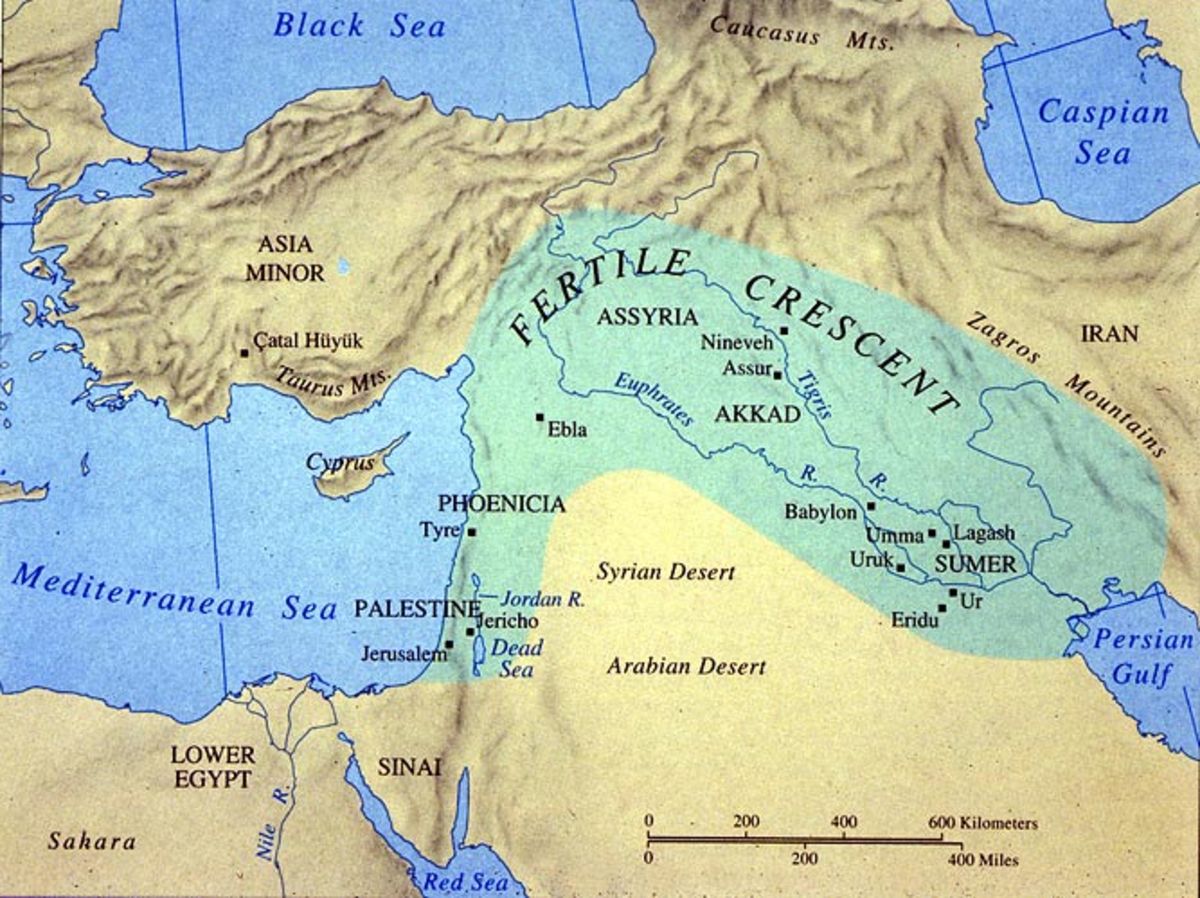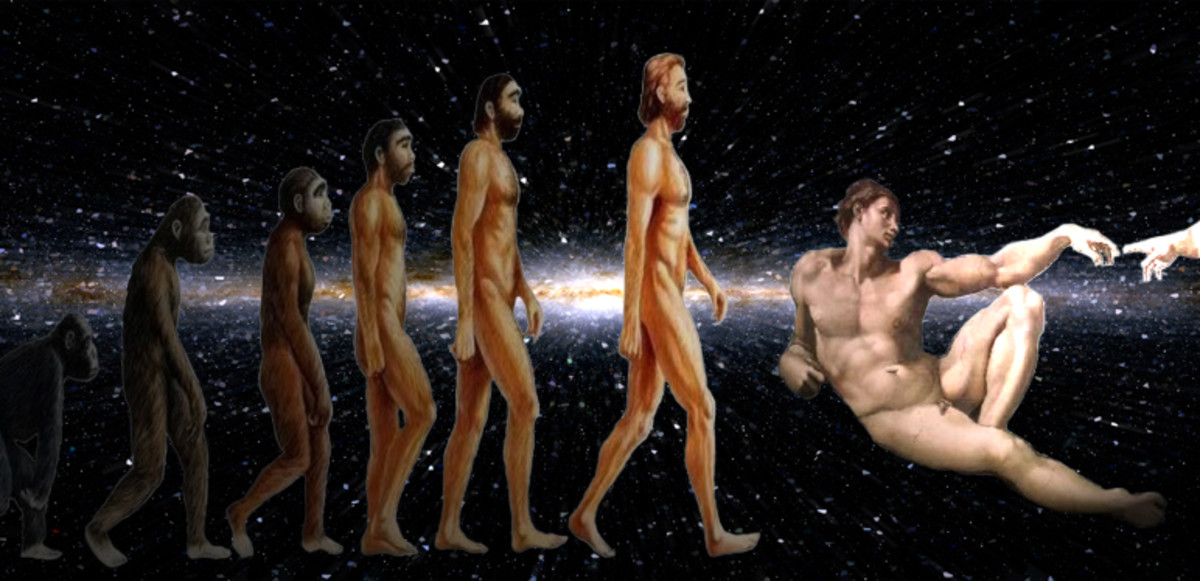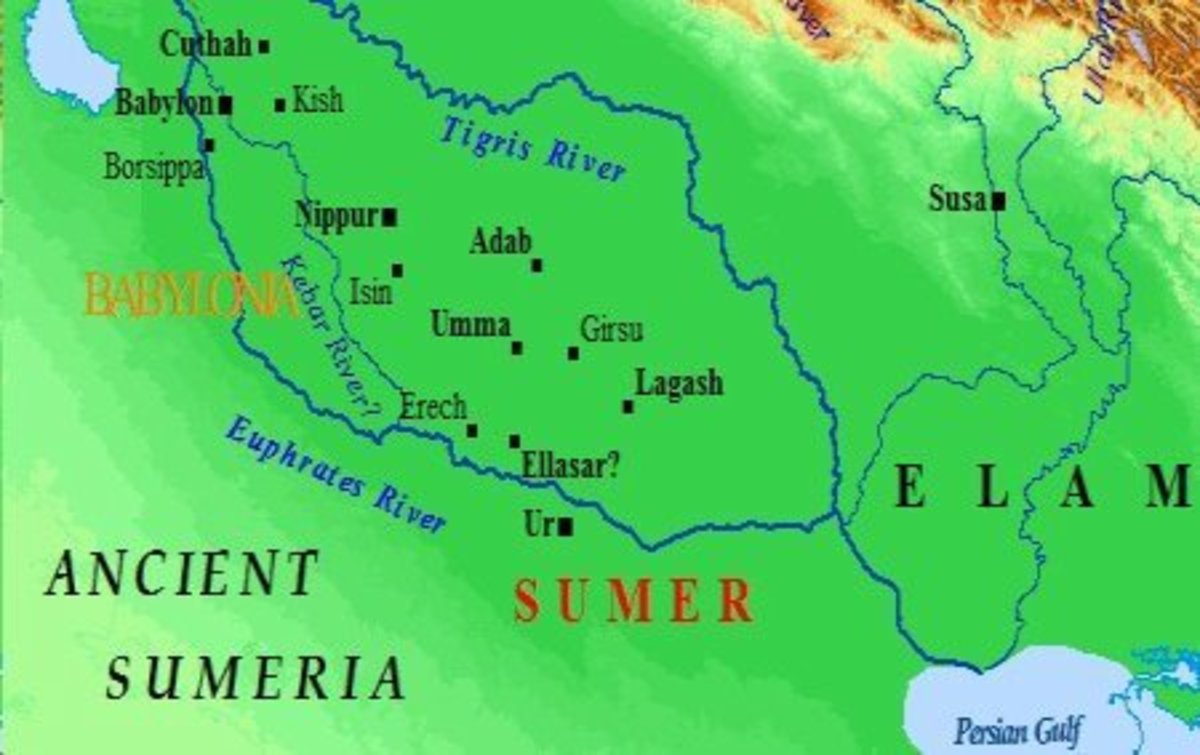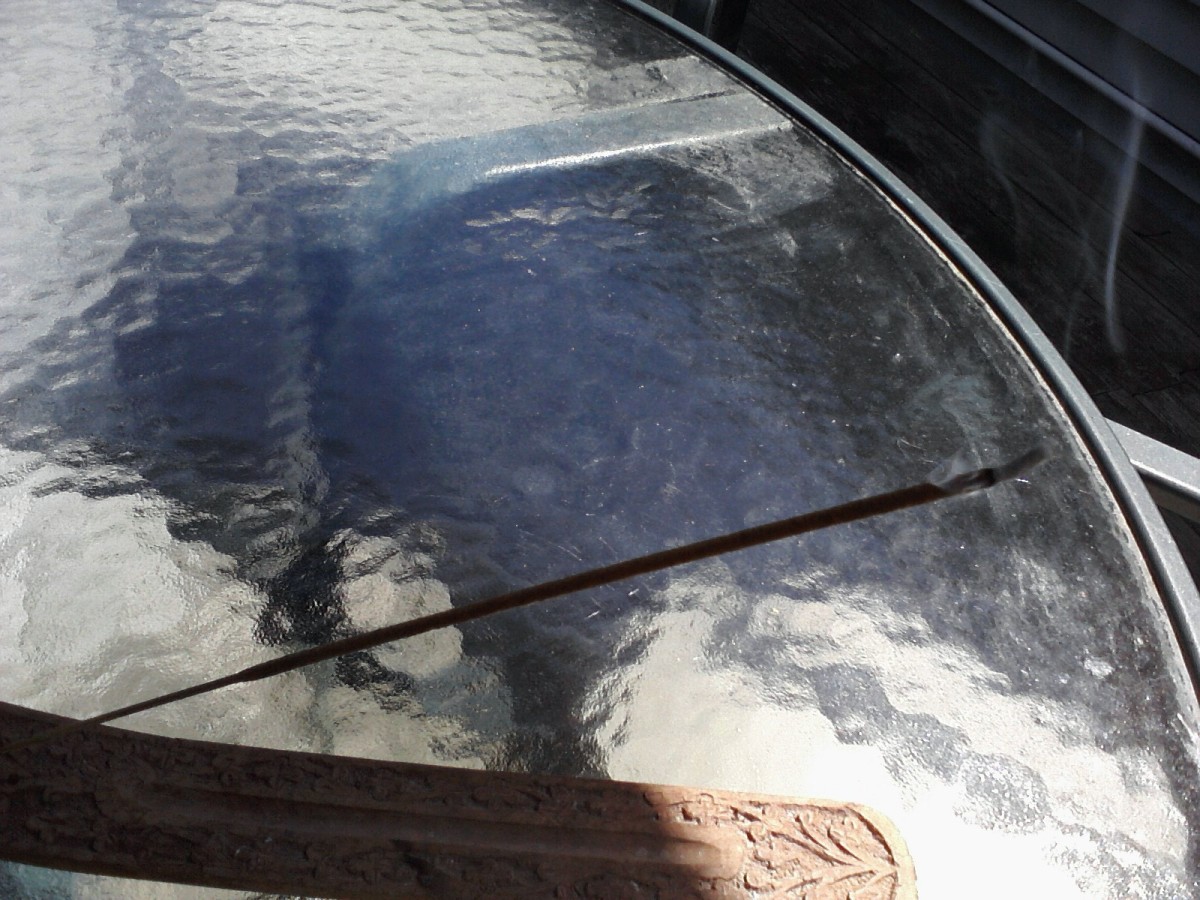Noah's Ark
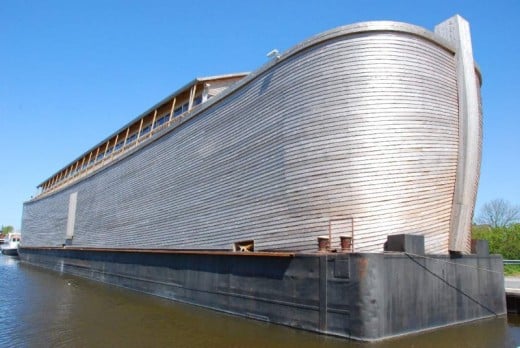
In this article I would like to address the issue of the flood narrative from three different perspectives. There are actually three distinct versions of the story. The first was told by the Sumerians, the second appears in Babylonian literature in the epic of Gilgamesh. And the third is the Jewish version in the OT.
The original Sumerian version is fragmented. But we do get all the elements of the story. It begins by telling us: “ After An, Enlil, Enki and Ninhursaja had fashioned the black-headed people, they also made animals multiply everywhere, and made herds of four-legged animals exist on the plains, as is befitting.”
Enki and Ninhursaja were the gods that made mankind from clay. They did so with one particular task in mind, to make slaves that would dredge the rivers for them. They didn’t like their first attempts and destroyed them right away. But soon they got it right and modern man came to be. They also found they had many uses for us, so they started creating other jobs for us for to do. They eventually realized we were now their responsibility and some of the gods grew to love us.
“ After the ...... of kingship had descended from heaven, after the exalted crown and throne of kingship had descended from heaven, the divine rites and the exalted powers were perfected, the bricks of the cities were laid in holy places, their names were announced and the ...... were distributed. The first of the cities, Eridug, was given to Nudimmud the leader. The second, Bad-tibira, was given to the Mistress. The third, Larag, was given to Pabilsaj. The fourth, Zimbir, was given to hero Utu. The fifth, Curupppag, was given to Sud. And after the name of these cities had been announced and the ...... had been distributed, the river ......, ...... was watered, and with the cleansing of the small canals ...... were established.”
As you see, it’s difficult when the texts are fragmented. But you get the general idea. We have other texts that reference these so we can get a clearer picture. There were on line versions you could read at one time, which is where I got my translation. But it seems now I can only find books which contain the translations. If anyone is interested in seeing the entire story I can email it to them, or post it on one of my web pages.
At any rate, the Sumerian version tells us that there a came a time when one of the gods decided that the humans were too noisy and obnoxious. Even more, he didn’t like them because they did not respect the gods. Gods apparently feed on worship. So he decided to do away with them in a flood. The flood in this story is not worldwide. It is a regional flood that devastates all the major cities that were designated by the gods. Which in fact was the entire world to the Sumerians.
“A flood will sweep over the ...... in all the ....... A decision that the seed of mankind is to be destroyed has been made. The verdict, the word of the divine assembly, cannot be revoked. The order announced by An and Enlil cannot be overturned. Their kingship, their term has been cut off; their heart should be rested about this........" approximately 38 lines missing
In their story the Noah character is tipped off by a vision from the god Enki. In this story Noah is a referred to as a king and a merchant named Ziudsura who already travels the rivers with a boat load of animals and goods. But it is not a single boat. Rather it is many small covered barges tied together to make one very large craft. He builds more on to it so he can take in more animals and prepare for the coming flood. When he tells his vision to others they don’t believe him.
When the flood comes he and his family are the only survivors. In this story it rains for seven days and seven nights. The gods lament and finally convince An and Enlil to stop the flood, and never do it again. When Sumerian Noah sends out his dove on the last day, it doesn’t return and he soon finds land. There he bows before the sun god Utu and starts the sacrifice ritual. The gods are pleased and grant him immortality.
“More and more animals disembarked onto the earth. Ziudsura the king prostrated himself before An and Enlil. An and Enlil treated Ziudsura kindly ......, they granted him life like a god, they brought down to him eternal life. At that time, because of preserving the animals and the seed of mankind, they settled Ziudsura the king in an overseas country, in the land Dilmun, where the sun rises.”
So the Sumerian account is reasonable. The flood is regional, not worldwide, the boat is not one very large boat, but many small ones. The animals and seeds he takes are all the regional ones. We know that such floods happened in this region so it is a reasonable account. When you separate the gods from it, it becomes quite believable.
The Babylonian story comes to us through the epic of Gilgamesh. He was a Babylonian king who went on an adventure to find Utanapishtim, which is the name the Babylonians gave Ziudsura or Noah. It is Noah himself who recounts the story of the flood to Gilgamesh.
To understand all this we need to know some history of the region. The Sumerians were the first Western civilization. They invented writing as long ago as 4500 BCE. Many of the stories of Genesis can be attributed to them including Noah’s Ark and possibly Job. I say possibly because the only version of it I have seen is almost too fragmented to say for certain.
A couple thousand years later Babylonian culture rises and Sumer is in decline. The Babylonians finally defeated the Sumerians. But Sumer arose again under the rule of Sargon the Great. He was a Babylonian but he had an affinity for Sumerian culture and made it great again for several hundred years.
The Sumerian myths were transferred to the Babylonians and they made them their own. They even shared gods. But the Babylonians retold the story of Noah using their own gods almost 2000 years after the Sumerians had written it down. You can see the whole story at:
http://www.ancienttexts.org/library/mesopotamian/gilgamesh/tab11.htm
Utanapishtim spoke to Gilgamesh, saying: "I will reveal to you, Gilgamesh, a thing that is hidden, a secret of the gods I will tell you! Shuruppak, a city that you surely know, situated on the banks of the Euphrates, that city was very old, and there were gods inside it. The hearts of the Great Gods moved them to inflict the Flood. Their Father Anu uttered the oath of secrecy. Valiant Enlil was their Adviser, Ninurta was their Chamberlain, Ennugi was their Minister of Canals.
Ea, the Clever Prince, was under oath with them so he repeated their talk to the reed house: 'Reed house, reed house! Wall, wall! O man of Shuruppak, son of Ubartutu: Tear down the house and build a boat! Abandon wealth and seek living beings! Spurn possessions and keep alive living beings! Make all living beings go up into the boat.
The boat which you are to build, its dimensions must measure equal to each other: its length must correspond to its width. Roof it over like the Apsu.
I understood and spoke to my lord, Ea: 'My lord, thus is the command which you have uttered I will heed and will do it.”
Again, the flood was a regional one not a worldwide flood. But this story tells us the sea flooded, where as the Sumerians told us the river flooded. This one does sound more like the Jewish version. The differences are that there are many gods involved. Notice Enlil was still there from the first version. An is now Anu. Ninurta replaces Ninhursaja. Ea replaces Enki.
But the elements of the first story are all here. In fact there are other interesting elements that appear in Judaism later on. The god that was helping Noah told him he would shower bread from heaven on him. This is just before the flood and when the boat is finished:
“Shamash had set a stated time: 'In the morning I will let loaves of bread shower down, and in the evening a rain of wheat! Go inside the boat, seal the entry!' That stated time had arrived. In the morning he let loaves of bread shower down, and in the evening a rain of wheat. I watched the appearance of the weather. The weather was frightful to behold! I went into the boat and sealed the entry.”
This story has the boat we are used to. It was a “field in area and its walls were each 10 times 12 cubits in height, the sides of its top were of equal length, 10 times I2 cubits each.”
A cubit according to Rome and Greece is measured by the forearm. So if that were the measure used, it was around 18 inches or so. This is saying the ship was about 180 feet high. That is, of course, not possible. That would be a 17 or 18 story building. It would be a very large ship even by today’s standards. A “field” could be a specific Babylonian measure. But often measurements were made by how much land an ox could plough in one day. If that is the standard they are using then 6480 square cubits or one third of an acre would be about right according to Mesopotamian standards of the time. However, it is really anyone’s guess.
But Noah tells us: “I provided it with six decks, thus dividing it into seven (levels). The inside of it I divided into nine (compartments). So while it is a big ship, it would have likely been half the previous estimate, unless his decks were 20 feet high each, which wouldn’t make a lot of sense. Still an impressive ship for 5000 BCE, assuming we are talking about the Sumerian event. But we will get back to this later.
Again in this story the flood lasts 6 days and seven nights, just like in the Sumerian story:
The gods--those of the Anunnaki--were weeping with her, the gods humbly sat weeping, sobbing with grief(?), their lips burning, parched with thirst. Six days and seven nights came the wind and flood, the storm flattening the land. When the seventh day arrived, the storm was pounding, the flood was a war--struggling with itself like a woman writhing (in labor). The sea calmed, fell still, the whirlwind (and) flood stopped up.”
So all the gods lament what had been done. Here too the boat comes to rest on a mountain called: Mt. Nimush, which is now thought to be Pir Omar Gudrun in Iraq. Not the same mountain as the Jewish Noah comes to rest on. And the Sumerians don’t mention their Noah setting down on any mountain at all. He spots shore as the waters recedes.
In the end, the Babylonian Noah gives thanks to the gods and is rewarded with everlasting life for saving all the seeds and animals of the region.
There is another interesting side line to this. In Hindu myths King Manu and his wife were told by a Hindu god, Lord Matsya, that a deluge was coming. So he built a boat and took 9 types of seed and enough animals to repopulate the earth. All humans are their descendants. His ship ended up on the Malaya Mountains. But he was the first man and his wife the first woman. So the flood did not kill other humans, only animals and plants. But it is very possible it takes its similarity directly from the Sumerian myths, as Sumer predates Hinduism and there would have been trade, and a trade of stories, between the Middle East and India. Hinduism started between 3000 and 2500 BCE. A full two thousand years after the rise of Sumer.
In fact many civilizations have had flood myths. In China one myth says that the lone survivor of the flood rode his boat to heaven to ask the other gods for help. Native American Indians have several flood myths, but none have boats in them. Aborigines of Australia believe a great flood destroyed a society that lived there before they did. We also have flood myths from Egypt and Greece.
But of course floods happen all the time and they have devastated entire cultures, so it is no wonder we have so many myths. The reason many claim that the world was flooded is simply because to the people of the time their world was a region and they often thought of themselves as being alone. But there is no evidence that the world was ever completely under water up above the tops of mountains or anywhere near.
Never the less, the Jewish version is the standard among Christians, and it is the first to tell us the Mesopotamian flood was worldwide. Of course it was not written until long after the Sumerians wrote theirs and the Babylonians wrote theirs. In fact, even Jewish scholars only ended up writing the Torah down for the first time in 600BCE during the time they were in Babylonian captivity. They had been there for several hundred years, so were well acquainted with the Babylonian version of the story.
But they obviously already had their own version before captivity, as they had lived with the Sumerians. As we know from the Bible, Abraham came from a Sumerian city called Ur.
There are a lot of problems with believing the Jewish version and the Babylonian version. In fact, we can’t believe any of the Jewish version because it is impossible from beginning to end.
It seems the first Sumerian version was reasonable. A regional flood lasting seven days, a boat made from smaller boats tied together, and regional animals and seeds saved.
The Babylonian version gives us a regional flood, regional animals and seeds saved, but it gives us a boat that is way too big for the time period. Such a boat is too big to be made just of timber. If it had been, the boat would have fallen apart as soon it hit the water due to stress. Only a ship with a steel frame at least, could handle the pressures it would be under. Ask any boat builder. And to do it in seven days would also have had to be a miracle. He was working almost alone.
But the Jewish version is absolutely impossible from beginning to end. Noah had to build his boat and find every animal in the world to pack into it two by two and seven of each pair. There are thousands of species. The logistics are impossible. No one could do it even today. It means traveling around the world collecting, as well as building the boat at the same time; and all within seven days!
Noahs boat was smaller than the Babylonian boat according to the bible, but still wouldn’t hold its own weight in the water, let alone with thousands of animals on board. Such a boat could not house all those animals. Not even the largest ship currently in existence could do the job. Perhaps three or four might.
Then there is the problem of where all this water came from. To raise the water level of the world to the height of the mountains would mean we would need 5 times the earth’s current volume. Where would that come from? And then where would it go for the flood to subside in just 40 days?
There have been suggestions like perhaps a comet hit the earth and deposited its water. But of course that is impossible as well. A comet big enough to deposit that much water would be monstrously large and devastating to the entire planet. If as some suggest its ice turned to water as it entered the atmosphere, that water would be superheated steam and Noah would have been boiled by the air around him. And still, where did it all go?
There is zero evidence that there was ever a worldwide flood.
So it seems to me the likely origin and the truest account of the flood is the Sumerian version. The Babylonian and Jewish versions came long after and added impossible elements to the story, making it ever grander through the ages.



